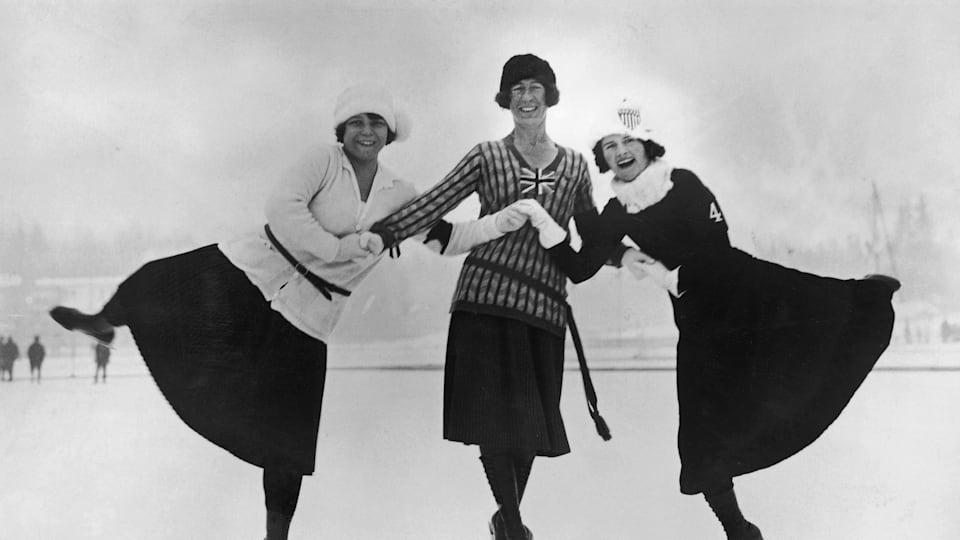Five things you didn't know about the Winter Olympics
With the XXIV edition of the Winter Olympic Games due to take place in Beijing in 2022, take a look at some of the most interesting and surprising facts surrounding the history of the competition.

From disciplines that made their debut at the Summer Olympics to animals taking part in competitions, the Winter Olympics has been full of strange and fantastic moments throughout its history.
Read on to discover five surprising facts about the Winter Olympics!
A summer debut for figure skating and ice hockey
These are, no doubt, two of the most popular disciplines at the Winter Olympics. However, their Olympic origins actually began at the Summer Games!
Figure skating was first contested at the London Olympics in 1908, and then again 12 years later in Antwerp, where ice hockey made its debut.
But with the advent of the Winter Olympics, the International Olympic Committee (IOC) made the wise decision to move both sports to the winter programme, where they have remained ever since the first edition of the Winter Games in Chamonix in 1924.
When horses and dogs stole the show
Equestrianism (horseback riding) has been a part of the Summer Olympic programme for years now, but did you know that at one point, animals were also included in disciplines at the Winter Olympics?
Scandinavian skijoring is a sport in which competitors wear skis and clutch reins attached to a wooden harness fitted onto one or more horses, ponies or dogs. It made a sole appearance as a demonstration event at St Moritz 1928, with three Swiss sleds (pulled by horses, for this event) finishing in first, second and third.
Bibi Torriani, who finished second in the event, also won a bronze with the Swiss ice hockey team at St Moritz 1928 and again at the 1948 Winter Games, which were also held at the Swiss resort.
In 1932 at the Lake Placid Winter Games, sled dog racing made a brief appearance as a demonstration sport.
When there's too little snow...or way too much!
Oh, how the organisers of the Winter Olympics in Innsbruck must have longed for a snowmaking machine! Of course, such technology was not around in 1964, when those Winter Games were in serious jeopardy due to a lack of snow and ice!
Fortunately, the Austrian army came to the rescue, transporting 20,000 blocks of ice from the mountains to the bobsled and luge track, and 40,000 cubic meters of snow to the Alpine skiing courses. Ironically, a heavy snowfall hit Innsbruck immediately after the Games had ended!
Over 20 years later, Nagano 1998 was also on the receiving end of some bad luck when the Japanese city was covered in snow and freezing rain, forcing the Games organisers to reschedule the alpine ski competition several times. Thankfully, in the end, all disciplines were contested without any further issues.
Norwegian power
Norway may be a small country of just five million, but they are the undisputed powerhouses of the Winter Olympics, with 368 medals (132 gold, 125 silver, and 111 bronze) - far outpacing the United States, their nearest rivals, on 305.
One could argue that Norway may have had an 'upper hand' on their competitors, as several sports - including Nordic combined and ski jumping - originated in the Scandinavian nation. Even so, Norwegian athletes have still had to perform at the Games on the world's biggest stage, and perform they have.
**Marit Björgen is the most successful athlete in Winter Olympic history, winning an astounding 15 medals (**8 gold, 4 silver and 3 bronze) in cross-country skiing.
With less than a year to go until Beijing 2022, rest assured that Norway will continue to add to its hefty medal tally.
Winning an Olympic medal at the Summer and Winter Games
It's hard enough to qualify to compete at the Olympic Games, let alone win a medal - but imagine reaching the podium in two different sports in two different seasons! You may surprised to learn that five athletes have achieved this incredible feat.
Edward Eagan (USA) was the first to do it, winning gold in the men's light-heavyweight boxing competition in Antwerp in 1920 and gold in the four-man bobsleigh at Lake Placid 1932.
Norwegian Jacob Thams won the gold medal in ski jumping (Chamonix 1924) and silver in sailing (Berlin 1936).
German Christa Luding-Rothenburger won two golds and two silver medals in speed skating (Calgary 1988 and Albertville 1992), as well as another silver in track cycling (Seoul 1988).
Canadian Clara Hughes won a total of six medals competing in speed skating and road cycling: gold, silver and two bronze in speed staking (Salt Lake City 2002, Torino 2006 and Vancouver 2010); plus two bronze medals in road cycling (Atlanta 1996).
American Lauryn Williams is the most recent member of this exclusive club, having won gold in the 4 x 100m relay at London 2012 and silver in the 100m in Athens in 2004, as well as a silver medal in the women's bobsleigh at Sochi 2014.
